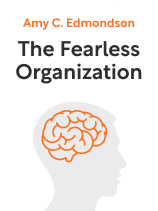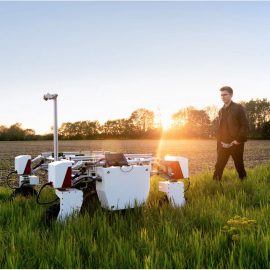

This article is an excerpt from the Shortform book guide to "The Fearless Organization" by Amy C. Edmondson. Shortform has the world's best summaries and analyses of books you should be reading.
Like this article? Sign up for a free trial here.
Can you rely on your employees? How do you build trust in the workplace?
Building trust in the workplace begins by letting your employees know that they’re valued. In The Fearless Organization, Amy C. Edmondson emphasizes that giving your employees purpose will give them more of a reason to work harder.
Keep reading to learn how to build trust with your employees.
Reshape and Redefine Company Belief Systems
Edmondson says building trust in the workplace begins with reshaping and redefining broadly understood, often long-held, sometimes deeply entrenched belief systems within organizations. It can be an arduous process that requires patience, particularly in companies where psychological safety hasn’t previously existed. Leaders have to work in consultation and collaboration with employees and other stakeholders to build trust—particularly with employees who have come to learn that engaging and speaking up will lead to repercussions, even when encouraged to do it.
(Shortform note: Experts say that a key to cultivating work cultures that make all employees feel safe to speak up is focusing on diversity in organizations and organizational leadership. They say that leaders must bring issues of inclusion into conversations about company strategies and practices and that managers should be encouraged, trained, and empowered to employ flexible, inclusive practices. Additionally, it helps if senior leaders are themselves diverse in visible and invisible ways.)
Example: Anglo American Engaged Employees by Building Trust
Cynthia Carroll was appointed the first female CEO of the South African mining company Anglo American in 2007. In the earliest days of her tenure, and in response to the 200 worker deaths in the five years prior to her arrival, Carroll announced a policy dedicated to ensuring zero worker fatalities or serious injuries. Edmondson explains that as a first step, Carroll shut down one of the company’s most dangerous mines to show she was serious. Her second step—an effort to reach out to workers to better understand the challenges they faced in the mines—failed because workers distrusted the managers attempting to engage them.
Carroll’s third step was to build workers’ trust—a key feature of psychological safety. It paid off: The company collaborated with union leaders and set up culturally attuned conversations with workers modeled after local village assemblies, and workers and executives signed off on a contract specifying steps the company would take to maximize safety in the mine. Anglo American showed the highest operating profits in its history during Carroll’s tenure, between 2008 and 2011.
Edmondson says that leaders can further reshape company-wide beliefs by redefining and setting clear expectations and common goals for workers in key areas such as the purpose of their work and their relationships with teammates.
Build Culturally Attuned Trust
In The Culture Map, Erin Meyer argues that business relationships are rooted in two types of cultural trust: task-based trust and relationship-based trust. Understanding what each one is and how it works can help leaders build trust among different cultural constituencies, as Carroll figured out how to do with the miners at Anglo American.
Meyer says that in cognitive cultures, such as the US and UK, trust is built through workers’ behavior (in other words, when they prove their competence and ability to follow through on tasks). Cognitive cultures draw a clear boundary between personal and professional relationships, which some argue makes those cultures superficial—because you can know someone you work with for years without actually knowing anything about who they are as a person.
In contrast, trust in relationship-based cultures is built when workers trust the people they work with in the same way they might their friends or family. In these cultures, trust is built slowly, over time, and relationships that began as business may continue on for years after business dealings are done. Some argue that it’s inefficient to spend so much time building personal relationships in business. However, Meyer argues that building trust is particularly important in emerging markets, where knowing the character of people you’re doing business with serves as a protective factor because people you trust are unlikely to engage in shady behavior that will harm your company and work.
Though Edmondson doesn’t specify the nature of Carroll’s trust relationship with the miners, we can intuit that her first, failed attempt to engage them was based on a cognitive culture model, because workers clearly felt they couldn’t trust the company. It appears that her subsequent, successful effort to engage workers took a relationship-based trust approach, since the company worked to develop a rapport with miners by a) collaborating with trusted union leaders and b) setting up culturally attuned meetings aimed at garnering workers’ trust and feedback.
Redefine Employees’ Understanding of the Purpose and Stakes of Their Work
According to Edmondson, communicating to employees how and why their work is meaningful and who it’s important to a) gives them a sense of purpose and b) helps them see their role as members of a broader team working to achieve organizational goals. Attuning them to the stakes of their work helps them understand the importance of speaking up in different situations they confront—whether that means speaking up to avoid mistakes when the stakes are high or taking creative risks when the stakes are low.
For example, the manager of a gym might remind trainers of their critical role in keeping clients safe, a high-stakes objective that supports the gym’s goal of bolstering members’ health. This reminder can both encourage and trigger a trainer to report a suspected problem to her supervisor before it turns into a crisis—for example, if she notices that an exercise machine is not working properly and could lead to injury.
Similarly, organizations can benefit from reminding employees that the stakes are low, as when a film director encourages his actors to take creative risks such as going off script and ad-libbing. Nobody’s going to die if the actors try various lines that don’t work, but the reward could be high if they come up with a great, unexpected line that audiences remember for life.
(Shortform note: Whether the stakes are high or low, experts note that it’s important for employees to feel that their roles make a difference to the organization, their lives, and the world. Another concrete way to help workers understand the importance and meaning of their role is to create job descriptions that clearly show how their position relates to the company’s mission. As a leader, you can further support their feeling that their job has meaning by working with them, when possible, to help define their job responsibilities and their approach to carrying them out.)
Redefine Employees’ Relationships With Their Teammates
According to Edmondson, reminding workers on different teams of their interdependence with one another—that their tasks are related to and reliant upon other teams’ tasks for success—encourages idea-sharing and communication about the impact of one team’s work on another. This, in turn, builds a culture in which employees feel more comfortable taking risks and speaking up without fear of others judging their ideas as silly or stupid.
(Shortform note: Not only does promoting inter-team collaboration encourage idea sharing, promote positive risk-taking, and increase feelings of safety, but experts also say it can reduce feelings of isolation, which is more important than ever in a pandemic-altered world of work defined by separation. Structured, purposeful collaboration—even virtually—can make colleagues feel more connected to one another and give them a sense of belonging, leading to greater feelings of satisfaction, higher engagement, and improved retention.)

———End of Preview———
Like what you just read? Read the rest of the world's best book summary and analysis of Amy C. Edmondson's "The Fearless Organization" at Shortform.
Here's what you'll find in our full The Fearless Organization summary:
- The importance of psychological safety in the workplace
- How leaders and non-leaders can foster psychologically safe environments
- Why workers should be able to make mistakes without fear of reprisal






